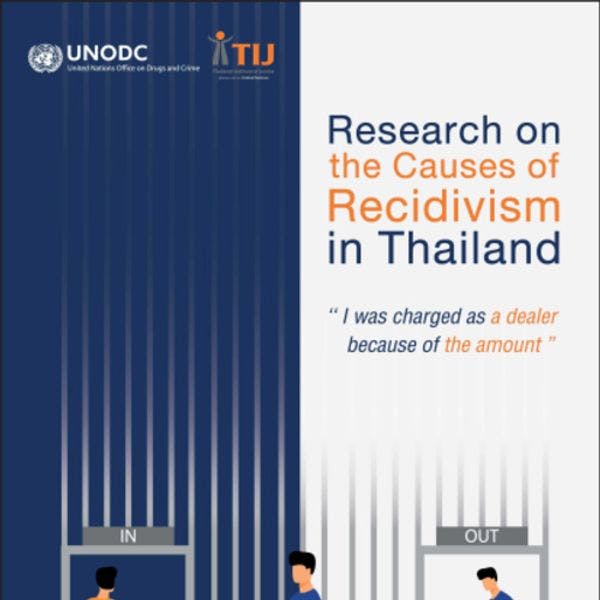Thailand Institute of Justice
Research on the causes of recidivism in Thailand
By Thailand Institute of Justice
Thailand presently has one of the highest prisoner-to-population ratios in the world (524 prisoners per 100,000 population in 2018), and the world’s highest share of female prisoners (14%). It also suffers from one of the highest rates of overcrowding, with over three prisoners for every available prison space. Upward of 40 prisoners may be housed in a single cell, with less than 1.2 square meters for each male inmate and 1.1 square meters for each female inmate.
The prison population has grown rapidly even as crime rates in Thailand have declined. Particularly in the time of COVID, overcrowding poses a threat to public health, and undermines rehabilitation efforts. According to interviews with the Ministry of Justice, each year Thailand spends around 12,000 million Thai Baht (or 380 million USD) on prison administration. Some 95% of the Department of Corrections budget is spent on food for the prisoners, salaries for the guards, and construction of new prisons, with only 1% for rehabilitation programs. About one-third of prisoners released from Thai prisons are reincarcerated within three years.
In addition to the traditional drivers of recidivism, such as unemployment, it appears that two legal standards could be key to Thailand’s prison overcrowding and the consequent lack of resources for rehabilitation: the threshold amount for the presumption of intent to sell methamphetamine and the threshold amount to qualify for diversion to treatment. Data supplied by the Department of Corrections show:
• 80% of Thailand’s prisoners are incarcerated for drug-related offences;
• 78% of drug-related offenders were convicted for offences related to yaba (methamphetaminetablets); and
• 76% of these drug-related offenders were convicted for possession with intent to sell.
Downloads
Topics
Regions
Related Profiles
- United Nations Office on Drugs and Crime (UNODC)
